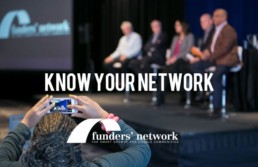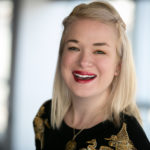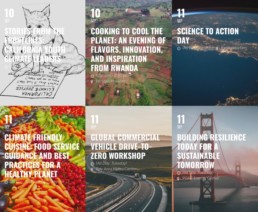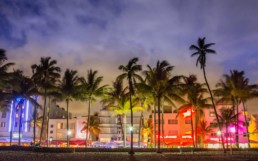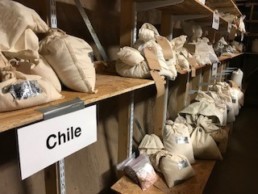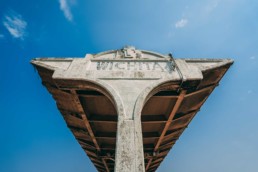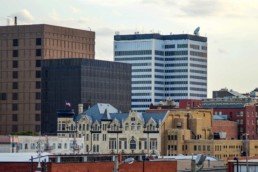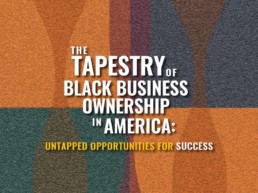Lead The Way. Be The Change. Apply For The 2019 PLACES Fellowship Today!
By Dion Cartwright, Director of Equitable Initiatives and Leadership Development
|
This is a critical moment for philanthropy. We are faced with communities increasingly divided by not only the destructive political rhetoric of the moment, but deep-rooted and far-reaching inequities that affect everything from the water we drink to the air we breathe, whether our neighborhoods are safe from violence and whether our communities can withstand natural disasters. How can leaders in philanthropy step up to confront the difficult truths of our institutions — and of ourselves — that stand in the way of a truly equitable and inclusive future?
Last year’s application cycle coincidentally launched shortly before the deadly alt-right protests in Charlottesville, Va. As PLACES alum CJ Hager, a director at the Vitalyst Health Foundation, reminded us last year as we saw the images of white supremacists marching with flaming torches and Nazi flags: “PLACES was started for a reason and that reason still lives.” It has been a year since Charlottesville, a year of more headlines detailing incidences of injustice, exploitation and erosion of civil liberties. But there is also good work being done by good people who care deeply about making our communities better places to live — for everyone, regardless of race, gender, ethnicity, economic status or sexual orientation. PLACES explores these stories, too. After all my years involved in this fellowship, first as a fellow myself and now as its program director, I’ve realized that above all else, PLACES is a gift. The gift of time to reflect on our work and our impact. The gift of connecting with others. The gift of freedom to question ourselves and our sector, and the freedom to know there are no easy answers. And after seeing more than 100 alumni graduate from this fellowship with a deeper understanding of economic and racial justice, which then informs their work as practitioners, PLACES also has given me the gift of hope. |
|
I encourage you to consider applying for the next places cohort. You can learn more about the program here and access the application here. If it’s not the right time for you to apply, that’s fine. Feel free to share this with someone in your organization or professional network that would benefit from PLACES. And to those of you who are PLACES alum, current fellows, or have supported PLACES through your work with the Funders’ Network: Thank you for the work you’ve done, and continue to do, to make our communities, institutions and policies more equitable and just. Applications are due Nov. 1, 2018. To apply click here. |
About the AuthorDion Cartwright is Director of Equitable Initiatives and Leadership Development for the Funders' Network for Smart Growth and Livable Communities. |
Know Your Network: Q&A with Surdna's Patrice Green
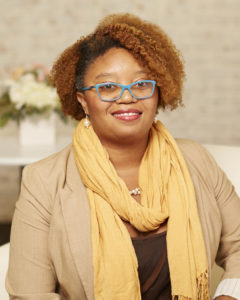
By Martha Cecilia Ovadia, Senior Program Associate, Equity and Communications
Who are the funders that make up the Funders' Network? Know Your Network is an occasional Q&A series featuring our members. This month, we chat informally with Patrice Green, the Surdna Foundation's new program officer for Strong Local Economies. Patrice is currently a member of the Older Industrial Cities working group.
1. We know you are new to Surdna as a program officer for Strong Local Economies — how has your transition been and what would you describe as your own personal learning style?
I would describe my transition as an exciting whirlwind. I was on the road travelling by week two or three and preparing to be a one-woman team by month three. I consider myself an experiential learner, which worked well with the rapid pace by which I needed to pick-up this programmatic work.
2. You are also new to philanthropy — you previously worked at HUD! What has surprised you about the philanthropic sector?
I am new to national philanthropy, but I spent some time running a consensus-based community grantmaking process for Bread & Roses Community Fund in Philadelphia. I think the evolution of the philanthropic sector in the ten years since I was last a grantmaker is pleasantly surprising. Ten years ago the work that was happening at Bread & Roses in supporting racial justice work was really concentrated at the sister funds of The Funding Exchange. Now, major national funders from Surdna to Annie E. Casey and Rockefeller are working through embedding and funding equity.
3. You travel a lot for work. Any favorite site visit that stands out so far?
It has been wonderful to travel to a number of places I have never visited and to meet partners doing tremendous work. One of my favorite site visits was to Memphis for the MLK50 Commemoration. Being able to be a part of the historic commemoration, while being very interrogative of the current state of economic justice or injustice in Memphis with our grantee partners, members of our staff, and board members was truly profound.
4. As a local, where is your favorite lunch spot in the Big Apple? What is that secret place you wish everyone knew about?
My co-workers would probably answer in concert for me in regards to my favorite lunch spot: Tina’s, hands down. It’s a little Cuban restaurant with delicious pernil and portions for two-days’ worth of lunch. Everyone should know about Pollo de Oro in Brooklyn, the pisco punch is delicious, the service is great and the food never disappoints.
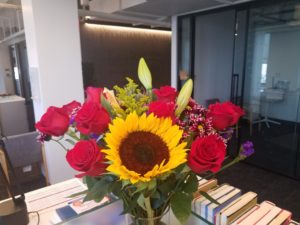
5. What is something you do as a practice of self-care, especially in 2018 when this work can be stressful.
I try to use my commute to do meditation or reflections. I think it’s also important to stay connected to friends and family and to stay grounded in the joy of human connection. When I am not traveling, I try to keep fresh flowers on my desk. It has become a habit not just of self care but of encouragement to my colleagues.
6. What is something you think would surprise people about New York?
The commute times. Invest in a book, podcast, or something!
7. Tell me about your hometown — what makes it special? Is there a special business or shop you would say is a “can’t miss”?
I am an army brat who moved around quite a bit before we settled in the DMV (DC-Maryland-Virginia), but I have been a Philadelphian for the past 17 years. I think walking around Old Town Alexandria is a great opportunity to discover some gems in the DMV. In Philly, it is all about the food. You must visit Reading Terminal and if you want a great weekend brunch spot, my favorite West Philly BYOB is Aksum.
About the Author
Martha Cecilia Ovadia is TFN's senior program associate for equity and communications. Contact her at marci@www.fundersnetwork.org.
Global Climate Action Summit Events For Funders—Get Involved!
 By Martha Cecilia Ovadia, Senior Program Associate, Equity & Communications
By Martha Cecilia Ovadia, Senior Program Associate, Equity & Communications
The Global Climate Action Summit will bring leaders and people together from around the world to celebrate the extraordinary achievements of states, regions, cities, companies, investors and citizens with respect to climate action. It will also be a launchpad for deeper worldwide commitments and accelerated action from countries—supported by all sectors of society—that can put the globe on track to prevent dangerous climate change and realize the historic Paris Agreement.
The summit takes place in San Francisco Sept. 12-14, with hundreds of hundreds of affiliate events taking place in the San Francisco Bay Area and throughout the world during the week of September 10-14th, including climate action panels, workshops, tours, exhibits and other special events.
Can’t attend in person? From Sept. 12-14, you can virtually attend the summit by streaming it live on YouTube, Facebook and Twitter.
Below are select events taking place at or in affiliation with the GCAS, as well as a webinar sponsored by CEFG and EGA on Aug. 22 with information for funders on the summit as well as other major climate-focused events next month. For a complete look at GCAS events, click here.
![]() Webinar: Sponsored by CEFG and EGA
Webinar: Sponsored by CEFG and EGA
From the Global Climate Action Summit to Climate Week NYC and EVs In Between: What Funders Need to Know | Aug. 22, Noon PT / 3 p.m. ET
This September brings an explosion of climate activities and events, starting September 8 and ending September 30, including the Global Climate Action Summit (GCAS), Climate Week NYC, the Climate March, Solidarity to Solutions Week, and the EV Road Trip. All of these events aim to highlight and build on the response from a wide array of entities–cities, states, businesses, grassroots communities, and many other organizations–to the U.S. federal government's withdrawal from the Paris Agreement. Leaders within all these sectors have declared We're Still In and plan to meet the Paris Agreement goals and in many cases, go beyond. This webinar will offer an overview of the September activities and events--how they complement each other and reinforce the message that there is strong support for climate action and progress on clean energy. We will also discuss the role of philanthropy in each, both as a supporter and a participant.
 GCAS Events
GCAS Events
From Puerto Rico to Hawaii: How U.S. Island Jurisdictions are Confronting Climate Change | Sept. 11, 1 p.m. to 5 p.m. PT
By invitation only. Email mdl@nyct-cfi.org for details.
Whether it is Long Island, Maui, Vieques, or Coronado Island, U.S. island jurisdictions are already bearing the brunt of the chaotic climate our nation has been experiencing in recent years. Often disaster recovery, climate resilience, and clean energy policies and programs designed for the mainland fall short when applied to islands. During this invitation-only mini-retreat, the community foundations from Puerto Rico, Hawaii, New York, San Diego, New Orleans, Miami, and San Francisco will bring together stakeholders from the public, private, and nonprofit sectors to explore how the nation’s island communities have already been responding to climate change, and discuss how best to approach present challenges and future opportunities. Event organizers include several TFN members, including the Greater New Orleans Foundation, San Francisco Foundation, New York Community Trust and Enterprise Community Partners.
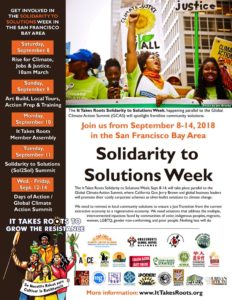 People’s Orientation to the Global Climate Action Summit | Sept. 11, 9 a.m. to 11a.m. PT; Sept. 12, 11a.m. to 4pm
People’s Orientation to the Global Climate Action Summit | Sept. 11, 9 a.m. to 11a.m. PT; Sept. 12, 11a.m. to 4pm
Leaders of philanthropy will meet social movement leaders from across California, the U.S. and around the world, and discuss events and activities taking place both inside and outside the Summit.
This orientation is intended for a philanthropic audience and will be led by representatives of grassroots movements rooted in Indigenous communities, communities of color, and other low income communities on the front lines of the climate crisis. In addition to an examination of events and activities around the Summit, the People’s Orientation will host curated discussions and workshops to look at key political organizing strategies, Just Transition plans, healthy energy systems, equitable economies, and transformative climate investments.
Organizers include: Alison Corwin of Surdna Foundation, Farhad Ebrahimi of the Chorus Foundation, Kathryn Gilje of the Ceres Trust, Samantha Harvey of EDGE Funders Alliance, Regan Pritzker of Libra Foundation, Erin Rogers of Hewlett Foundation.
 Getting to Carbon Neutrality: “Game Changers & No Brainers” Report Launch & Workshop | Sept. 12, 8 a.m. to 12:30 p.m. PT
Getting to Carbon Neutrality: “Game Changers & No Brainers” Report Launch & Workshop | Sept. 12, 8 a.m. to 12:30 p.m. PT
Kimpton Sir Francis Drake Hotel, 450 Powell Street
The Carbon Neutral Cities Alliance (CNCA) – a global collaboration of cities cutting emissions by 80% or more by 2050 or sooner – will release its “Game Changers & No Brainers” report, which highlights the key policies and practices that CNCA cities have found to be transformational in addressing their most pressing GHG emission challenges.
An opening keynote panel will feature mayors from leading cities already undertaking these game changers. This will be followed by “how-to” sessions, led by city sustainability directors, on implementing game changers under different regulatory contexts, the challenges faced, and the potential strategies for overcoming them.
A casual lunch will be served from 12:30-1:00.
The CNCA Game Changers & No Brainers event is an official affiliate event of the Global Climate Action Summit.
The Carbon Neutral Cities Alliance is a project of the Urban Sustainability Directors Network, and is sponsored by The Kresge Foundation, Barr Foundation, Summit Foundation, Rockefeller Brothers Fund, McKnight Foundation and Bullitt Foundation.
Space is limited. Priority given to city governments.
Email michaelshank@carbonneutralcities.org for more information.
 Climate Action on the Shoulders of Science and Industry: A San Diego Story | Sept.13, 9 a.m. – 11:30 a.m PT
Climate Action on the Shoulders of Science and Industry: A San Diego Story | Sept.13, 9 a.m. – 11:30 a.m PT
Perkins Coie LLP, 505 Howard Street, #1000
It is a proven fact in San Diego, California, and beyond that we no longer live in a time when economic growth has to come at the expense of the environment. The technologies already exist that will transform our energy future, and the market is already showing that today’s consumers and citizens are on board.
Today more than ever, regional cities, universities, and local institutions are carrying the torch in the fight against climate change, and in many ways the San Diego region is taking the lead. We are fortunate to be part of a community in San Diego that values innovation, sustainability, and collaboration.
Driven by this forward-thinking spirit, our stakeholders in technology companies, government, academia, nonprofits, and the military are committed to shaping a positive clean energy future for San Diego and the world that will carry us into the next decade and beyond.
This regionally-focused affiliate event will showcase San Diego’s clean energy and climate action leadership, recognizing the immense power it has to both strengthen the economy and preserve the planet as a safe home where our children and grandchildren can also prosper and thrive.
 Water Pavilion | Sept 14, All Day
Water Pavilion | Sept 14, All Day
Join leaders from governments, business, civil society, academia, and communities around the world for the Water Pavilion, a two-day affiliated event focused on water’s role in reaching climate goals and building resilience to impacts.
Our climate is changing, and water delivers some of the most devastating consequences and promising solutions. Droughts, floods, and extreme weather threaten people’s homes, safety, and livelihoods. Balancing water systems locally and globally is essential to meet basic human needs and protect our food supply. Water is integrally linked to our goals to reduce greenhouse gas emissions, as our use of water can either consume or produce energy. Well-functioning watersheds and basins are necessary to support healthy forests, floodplains, wetlands, and other carbon sinks needed to meet our climate goals.
The Water Pavilion will include inspirational speakers, high-level panel discussions, and interactive workshops to articulate the water-climate connection and inspire participants to make ambitious commitments. Activities are organized around five themes:
- Science to Action – A reflection on what we know and how science should inform action
- Laws and Governance – Elevating governance structures that support and achieve water-climate resilience
- Financing Solutions – Exploring creative financing approaches for water innovations and infrastructure globally
- Communities on the Front Lines of Climate Change – Communities coming together to share what they’ve learned and identify pathways to resilience
- Water-Climate Commitments – Participants making public commitments to increase the pace and scale of water-climate resilient actions
The Water Pavilion is hosted by the California Governor’s Office of Planning and Research and sponsored by the Water Foundation, Leonardo DiCaprio Foundation, and other foundations and NGOs. Water Pavilion will take place at Autodesk, 1 Market St, Suite 200 on September 13 and at the Exploratorium, Pier 15, the Embarcadero both on the Bay waterfront in San Francisco on September 14.
About the Author
 Martha Cecilia Ovadia is TFN’s senior program associate for equity and communications. Contact her at marci@www.fundersnetwork.org.
Martha Cecilia Ovadia is TFN’s senior program associate for equity and communications. Contact her at marci@www.fundersnetwork.org.
#TFNMiami Spotlight | 2020 census, Caroline Lewis changes Miami, and black developers in the South
By Martha Cecilia Ovadia, Senior Program Associate, Equity & Communications
In advance of TFN's 2019 Annual Conference in Miami, we'll be sharing interesting and insightful resources that provide context for many of the issues we'll explore as part of our 20th anniversary event.
Don't forget to catch our weekly #MiamiSpotlight and #TFNMiami news on our twitter (Funders_Network) and facebook (Funders' Network for Smart Growth and Livable Communities) feeds.
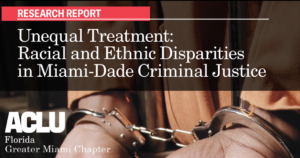 The ACLU of Florida's Greater Miami chapter recently released a landmark, 52-page report that details the justice disparity between Miami's black and white residents, warning that discriminatory policing erodes Miami's communities of color. "When entire neighborhoods and classes of people are subject to constant arrest and police surveillance, the 'collateral consequences' of mass incarceration serve to weaken communities with already few resources, further increasing racial and ethnic inequality," the ACLU writes. Download the full report here.
The ACLU of Florida's Greater Miami chapter recently released a landmark, 52-page report that details the justice disparity between Miami's black and white residents, warning that discriminatory policing erodes Miami's communities of color. "When entire neighborhoods and classes of people are subject to constant arrest and police surveillance, the 'collateral consequences' of mass incarceration serve to weaken communities with already few resources, further increasing racial and ethnic inequality," the ACLU writes. Download the full report here.
H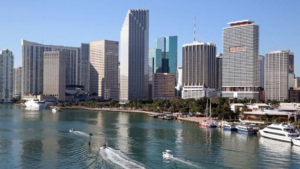 ow a citizenship question on the 2020 census could diminish Miami’s political clout (Alex Daugherty |Miami Herald | January 25, 2018)
ow a citizenship question on the 2020 census could diminish Miami’s political clout (Alex Daugherty |Miami Herald | January 25, 2018)
The Department of Justice wants the U.S. Census Bureau to ask people about their citizenship status on the 2020 census, and the additional questioning could lead to an undercount in immigrant-heavy Miami.
Undercounting the number of people living in Florida’s most populous county could affect how billions of federal dollars are distributed and diminish the state’s clout in the nation’s capital. The Census Bureau will choose whether or not to include the citizenship status question by March 31, when it finalizes the 2020 questionnaire. Read more here: hrld.us/2vKxw3m
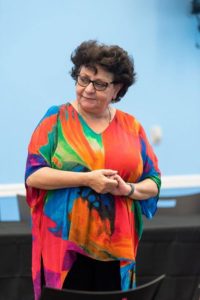 Meet the 31 people who are changing the South (TIME Staff | TIME Magazine | July 26, 2018)
Meet the 31 people who are changing the South (TIME Staff | TIME Magazine | July 26, 2018)
People across South Florida are awakening to the danger of climate change, and Caroline Lewis is a big reason why. The former high school principal has spent the last eight years educating the region’s vulnerable communities about its effects from the helm of the CLEO Institute, a nonprofit she founded. At the heart of CLEO’s work is Lewis’ training of local leaders in the science and policy of global warming, so they can spread the word in their communities. CLEO also helped found the Miami Climate Alliance, which has planned marches and helped shape local environmental policy. Some areas in South Florida have already seen a spike in flooding thanks to climate change, and the problem is only expected to worsen as sea levels rise—so the need for Lewis’ work will only increase too. Read more here: https://ti.me/2vkJOQD
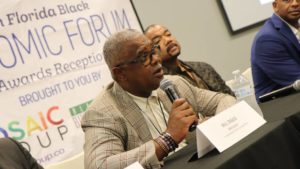 ‘We’re treated as an anomaly.’ Black developers discuss barriers in Miami real estate (Rob Wile | Miami Herald | August 13, 2018)
‘We’re treated as an anomaly.’ Black developers discuss barriers in Miami real estate (Rob Wile | Miami Herald | August 13, 2018)
It’s hard enough being a developer in South Florida, one of the most cut-throat real estate markets anywhere.
Being a black developer here does not make the job easier.
On Thursday, five black real estate investors invited by the South Florida Black Economic Forum discussed the issues they face.
Read more here: https://hrld.us/2Ou3A39
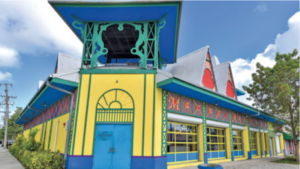 Little Haiti marketplace creating a hub for commerce and culture (Nadege Green | WLRN | August 2, 2018)
Little Haiti marketplace creating a hub for commerce and culture (Nadege Green | WLRN | August 2, 2018)
For years, the Caribbean Marketplace in Little Haiti, also known as Mache Ayisyen, sat empty and in disrepair.
Part of the problem was attracting both vendors and people to shop. That is starting to change. Read more here: https://bit.ly/2MhKoJq
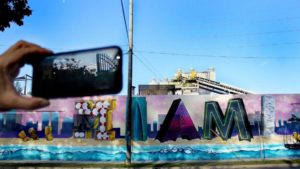 Augmented-reality mural in Miami warns of climate-change danger (Leslie Ovalle| Miami Herald | February 5, 2018)
Augmented-reality mural in Miami warns of climate-change danger (Leslie Ovalle| Miami Herald | February 5, 2018)
A patient audience on Saturday night waited on the sidewalk along North Miami Avenue in front of the Historic City of Miami Cemetery for the unveiling of an augmented-reality mural depicting the dangers of climate change to South Florida.
“Miami is indeed a ‘canary in the coal mine’ with respect to the effects of sea level rise. I love this city very much, lived here most of my life, so it is an honor to be involved in a project to raise awareness on this issue by mixing augmented reality with mural art. We owe it to future generations to take action now while there is still time,” said Juan Carlos Gallo, a digital designer for Miami Murals. “Our local government also recognizes this, so there’s an opportunity for the people and the government to come together.” Read more here: https://hrld.us/2LOqPbg
About the Author
 Martha Cecilia Ovadia is TFN’s senior program associate for equity and communications. Contact her at marci@www.fundersnetwork.org.
Martha Cecilia Ovadia is TFN’s senior program associate for equity and communications. Contact her at marci@www.fundersnetwork.org.
Who’s at your table? How funders can support just and sustainable food systems
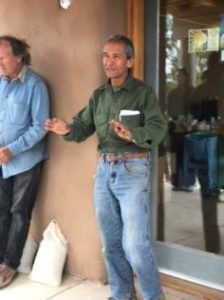
By Martha Cecilia Ovadia, Senior Program Associate, Equity and Communications
As mentioned in our recent post on solutions journalism, the Intermountain West Funder Network recently convened in Santa Fe, N.M. for its annual meeting. This years event focused on forward-looking strategies that would help funders increase the impact of their grantmaking to create more resilient, sustainable and equitable communities in the Intermountain West region.
One of the main themes of this year’s IMWFN meeting in New Mexico was learning about collaboration in investing in local communities, their food systems, and their agriculture. Henry Rael, program officer at the McCune Foundation, opened his session on regional food systems and economies in New Mexico with these questions for funders:
“How formalized or institutionalized does a behavior have to be to qualify as ‘collaboration’? Could it be holding the door open for someone as they enter the grocery store? Could it be getting together on a Saturday in November to make dozens of tamales together because it’s easier than each of us making them ourselves? Or is it MOUs among growers to organize cooperatives that aggregate and monetize their produce? Or is it spending one’s food dollars at a national grocery chain, to at a farmer’s market, or convenience store?”
According to Henry, we must define “collaboration” broadly to include all the different examples mentioned above, both formal and informal, conscious or unconscious, in-person or by proxy, by accident or on purpose. This comes as no surprise for those of us that do equity work in any philanthropic sector. We know that with a diversity of voices and peoples at the metaphorical table, better, more efficient, and equity-focused outcomes grounded in community and justice can be expected.
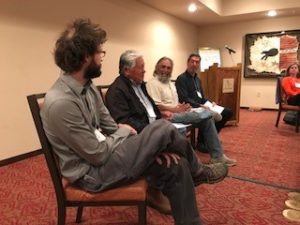
When reflecting on food culture itself, Henry went on to say that he viewed culture as “the relationship between people and place over time. It is something that emerges as a people choose to be in a place for generations. People figure things out. They learn about the dangers and treasures that are held by that in bed.”
As funders, this regional relationship with place must inform approaches to investing and collaborating with local communities. It is fundamental that we acknowledge that work on regional food systems, food justice, and water is place-based and people-based by its very nature. It cannot be done from a distance. It needs to be grounded. When speaking about the origins of the concept of a food system, Henry went on to say:
“In the beginning, there was a food system and it was called 'nature.'”
Once humans got involved and began to understand the benefits of agriculture, economies became a factor. And what happened next, specifically in New Mexico, was colonization. Europeans, missionaries and conquerors forcibly disrupted the relationship local communities had with food and changed it forever. Over the next several hundred years, these different cultures mingled at the fringes, influencing each other and yielding, at times, something new and distinct.”
In New Mexico, the evolving local food system has been celebrated for its collaborative approach to working with regional communities, farmers, and ranchers. There is an effort to return not only to place, but to place-based relationships with people, nature, food and skills. Small-scale growers are at the front lines of reestablishing that oldest of relationships between their communities and the earth, taking an authentic and localized approach of local farms to local produce to local tables to local communities. This approach to regional food systems refreshingly (and not surprisingly) looks to return to the food cultures of those who came before—reflecting what we can term as “original food systems.” It is also a communal approach with a centered ethic of care for the land and its people. What is emerging is a new food culture that looks and feels more like the old food culture, a new system reaching to embody the values of the original food system.
Some practical approaches to collaboration with local farmers and ranchers shared during the IMWFN annual meeting in Santa Fe:
- Focus on funding programs that focus on the next generation of farmers and ranchers.
- Support equitable water and land use initiatives: this includes advocating for all stakeholders and collaborators to be at the table as decisions are being made, not just those with economical or judicial power. Collaboration, as we learned, is synonymous with community.
- Share the data: Shared data amongst all involved helps create better understanding and collaboration. Make sure the data has an equitable lens that captures all of the concerns of all involved in a holistic way—people, place, land, and a sustainable future.
- Be flexible. Listen to those on the ground who know the land, the people, the water, and the systems in place. Transition from top-down power to learning circles.
- Think long-term commitments to a community and place vs. short term outcomes.
Additional resources:
- The Resilience in New Mexico Agriculture Strategic Plan, a project funded in part by TFN members the Thornburg Foundation, W.K. Kellogg Foundation, McCune Charitable Foundation and the Santa Fe Community Foundation.
- Food LINC (Leveraging Investment for Network Coordination), a project that brings together multiple USDA agencies and 18 private foundations that include TFN members and IMWFN supporters the Thornburg Foundation (New Mexico) and Gates Family Foundation (Colorado). Surdna Foundation also funds Food LINC at the national level and participated as a speaker at the IMWFN gathering.
About the Author
 Martha Cecilia Ovadia is TFN’s senior program associate for equity and communications. Contact her at marci@www.fundersnetwork.org.
Martha Cecilia Ovadia is TFN’s senior program associate for equity and communications. Contact her at marci@www.fundersnetwork.org.
Going PLACES: In service to the 'Arc of Justice'
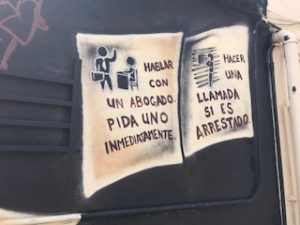
By Natalia Swanson, Program Director for Healthy Eating and Active Living, Mary Black Foundation
Back in July of 2017, as I was gathering my luggage from the conveyor belt at the airport, a good friend of mine sent me a text.
“Do you know of an immigration lawyer? A friend was just detained.”
My heart sank and I felt a small part of me die as my friend continued to send me more details. Maria (name changed to protect her identity) has two boys in elementary school and a husband. Tears began to well in my eyes as I thought about this young mother now detained and separated from her family. Immediately I began texting other friends and allies for potential lawyers. I was able to send a couple of names and phone numbers to my friend, but everyone that I talked to told me that from what they had heard, if someone was detained by immigration, it was practically impossible now to have him or her released. Yet for this one woman and her family, I was going to do all that was within my power.
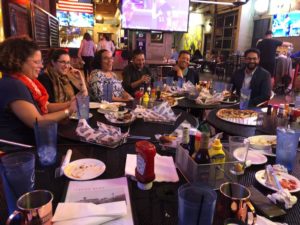
During our first PLACES site visit to Wichita, I was encouraged to be surrounded by other professionals in philanthropy who desire to use their position to “be of service to the arc of justice” (as stated by our consultant, Bina Patel). The work in and with our communities is urgent. Families are being separated, single mothers are trying to provide for their children, babies of African American moms are dying at a much higher rate before they reach their first birthday, children are entering school unprepared to learn, and communities remain marginalized due to years of systems and policies that have created deep inequities. Herein lies what for me remains a tension and one of the key lessons I have taken away from this first site visit: how can we carry forward our work -- not just our professional work, for I believe that when the work of justice becomes your mission, it guides all that you do -- with “reflective urgency?”
In the world of philanthropy, our tendency is to enter a space and desire be seen as the expert. (This is probably true for all professions, admittedly.) Even our job titles reflect this. This is mine: "Healthy Eating | Active Living Program Specialist." We want to provide answers; we want to solve the problems. Yet the work of racial equity requires us to think differently. The systems that make up our world were created over centuries. The events that we see, such as an immigrant mother detained and separated from her family, are just the tip of the iceberg. Beneath it lie patterns of these sorts of injustices: It is not just this one mother and family; there are still more than 2,000 who have been separated from their parents, with the path to reunification painfully unclear. Underneath the patterns are policies and structures that make family separation a real fear for many immigrants and marginalized people. All of this is rooted in our culture, our values, and our biases. To be able to get to these deep roots, we need to give ourselves space and time. We need to slow down. And we need to be okay with the possibility that we will not always know the answer.
Teresa Lovelady is the CEO of HealthCore Clinic and one of the many individuals we had the privilege of meeting in Wichita. She is a woman that radiates love for people. She took over this federally qualified healthcare center and began making significant changes to the way they do the work. She told us that 80 percent of the women they serve in their women’s clinic are uninsured and will never be eligible for Medicaid because they are undocumented. Even when the state’s governor turned away funding to support services for refugees, she figured out a way to bring funding to their clinic to assist this population. Teresa acknowledged the trauma that children from immigrant and refugee homes had and continued to face. In an effort to address trauma and support children from these homes, she integrated a behavioral health screening into the regular medical screening. If the screening identifies that a child needs support, the screener refers him or her to an on-site therapist. It was inspiring to see know that Teresa believes a person’s health is more than the healthcare they can receive. Health is about the whole individual. She believes this so much that everyone on her team, even the janitor, earns at least $12 an hour. These are just some of the bold moves that this CEO in Wichita has made. They are moves that reveal her understanding of the urgency behind it all. Theresa, as she closed her session with us said, “I love people. I love people so much that I will do whatever it takes and whatever I [need] to make certain that people are taken care of.”
I know I am going to learn so much more through the remaining months of the PLACES fellowship. Therefore, I say this cautiously: After this first site visit, I have two desires that I am holding close. First, that I would continue to learn the practice of reflection, the practice of slowing down and digging deep to better understand. Second, that the people that we hear from and the personal stories that we hear about in our site visits would inspire and continue to kindle this urgent fire to do things differently. I hope that we never lose sight of the Marias and Teresas of the world and that these individuals would push us to live lives of compassion, humility, and service – all for the “arc of justice.”
Catch up on our last Going PLACES blog here.
About the Author

Natalia Valenzuela, Mary Black Foundation
Natalia Valenzuela Swanson joined the Mary Black Foundation in March 2015 as the Healthy Eating | Active Living program specialist. Prior to joining the foundation, Natalia worked at the Upstate Workforce Investment Board as the associate director and served on the board of a local non-profit working to make Spartanburg a vibrant, connected and healthy community. Natalia completed the United Way Non-Profit Fellows Program, as well as Leadership Spartanburg. Natalia has a master's degree in city and regional planning from Clemson University and a bachelor's degree from Columbia College. She is a native of Ecuador and her husband is from South Dakota.
Going PLACES: Wichita — Starting with difficult conversations, from a place of love
By Randy Lopez, Program Officer, Wyandotte Health Foundation & 2018 PLACES Fellow
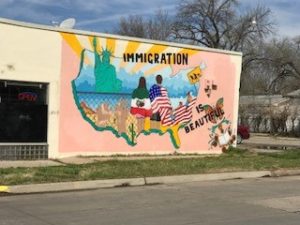
Last week, I was hanging at my parents' house with my mom and dad. As we often do, we were sitting in the kitchen. I don’t know why we always pick the kitchen; it’s one of the smaller rooms in their house but we always decide that’s the room in which to be. Maybe it has something to do with the proximity of the food, but in my family the kitchen is the core gathering place, whether we are eating or not.
On this particular Wednesday, my parents were reflecting on their immigration story. Both of my parents were born and raised in Mexico and were brought to the United States of America by their parents. My mom said, "Honey (she calls my dad honey…it’s kind of cute). Honey, we were blessed. Our parents were able to move to the U.S. and bring us here. And we were able to create a life and have a family with opportunities."
What prompted this comment from my mom? Well, on TV at that same moment was a Univision report from the U.S.-Mexico border on the harsh and tense conditions faced by families trying to cross. They were reporting on the inhumane separation of families which has now turned into the inhumane jailing of mothers, fathers, and children.
For my mom, the thought of having her family ripped apart, her children taken from her, because of "lack of status" is just unimaginable. She was reflecting on her journey, my father’s journey, and our family’s journey to where we are now.
I am blessed to be in a position that I don’t have to fear whether I will be deported or separated from my family. I don’t know the anxiety of wondering whether my parents will be home when I visit due to "lack of status" in this country.
But I also know that I do hurt when I hear of the unjust, inhumane, hateful, discriminatory and deeply rooted racist practices that we see and hear about every day.
I wasn’t sure what to expect through this PLACES Fellowship. I’ve been through may different "leadership trainings" and professional development experiences, but many fell short of getting to the root causes of racial and economic injustice in our communities.
I want to learn about how I can incorporate the work of racial equity, in a meaningful way, into my everyday work in philanthropy and beyond. I want to learn about ways to have real conversations and dialogue about race and racism. Most importantly, I want to learn what our response to our communities' needs will and should look like.
I want to know how best to use my voice as an individual, as an employee of a foundation, and as a Latino man to stand up against hate and tyranny, learning how to turn the conversations into solutions driven conversations focused on love, respect, and equity.
Our 2018 PLACES Fellows cohort met for the first time on our site visit to Wichita, Kan., which happens to be not far from Kansas City, the place I was born, raised and now work as program officer for the Wyandotte Health Foundation.
Day 1 of the Fellowship: Damn. We dove right into a root cause analysis of racial and economic inequity. I won’t get into details, but the conversation was intense yet inspirational and intentional.
18 Fellows from all walks of life, with all types of lived experiences and views on life, all gathered in a room talking about the work of racial equity. This was gonna get good, really fast.
A few (out of many) takeaways for me:
- Racial equity is inclusive, systemic, and focuses on root causes. It is on all of us, together, to lift this work and not be afraid to have deep conversations with each other, especially around real root causes of inequity.
- Communities know the answer. Often as funders we want to give answers. That’s not the point. Communities know the problems in their own community and have ideas about solutions that make sense and work. We have to be willing to listen, support, and be fully present.
- Start with self: I have to be willing to look at what my role is and be willing to make transformative change before expecting anyone else to do the same.
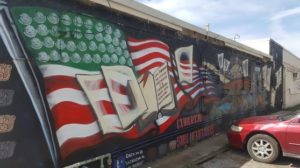
We met a community in Wichita that is really embracing these themes. A young man named Armando Minjarez, an immigrant, activist, artist, and engaged community member working towards healing through art was our local guide. We visited some of the community murals, which, sure, he lead, but he’ll be the first to tell you that it was really the community who spearheaded and truly took the lead. Art, he said, has inspired community conversations and has sparked continued work to bring the community together. His newest project will reflect community conversations on race between black/brown communities and will tell their stories through murals. The work of racial equity is incremental and comes from a place of love and inspiration.
I mentioned I wasn’t sure what to expect, but let me say I was not disappointed with this first gathering. Difficult conversations that set the tone which come from a place of love for community is where we must start. That’s how we make changes in ourselves, in our work, in our workplace (philanthropy), and ultimately in our communities. That’s how we end family detentions, families being separated, oppressive laws, and policies that overwhelmingly affect our vulnerable communities of color.
I can’t wait to see what the rest of the year will bring.
Catch up on our last Going PLACES blog here.
About the Author

Randy Lopez, Program Officer, Wyandotte Health Foundation
Randy Lopez was named Program Officer for the Wyandotte Health Foundation in Kansas City, KS. He is responsible for program development and grants administration in the Foundation’s funding priority areas of Primary Care, and Early Childhood Trauma, as well as for special initiatives. In addition to grantmaking, Lopez plays an important role in increasing collaborative partnerships as well as community awareness and engagement.
Featured image: Mural in downtown Wichita, Kan., depicting the struggle with immigration bureaucracy in the U.S. Photo credit: Randy Lopez.
Register Now! Closing the Wealth Gap: Why Black-owned Businesses Are Key to Economic Success | July 11
By: TFN Staff
A strong entrepreneurial spirit among black Americans has spurred the creation of untold numbers of black-owned businesses going back centuries and, at certain times in history, has resulted in thriving communities of enterprise such as the “Black Wall Street” of Tulsa, Oklahoma, and the bustling Shaw neighborhood of Washington, D.C.
However, today, black-owned businesses on the whole lag behind the average U.S. firm in terms of size and revenue. Ownership rates trail those of non-minority groups, and the failure rate is high. While these facts have been well documented, a recent report published by the the Association for Enterprise Opportunity aims to reframe and restart the conversation associated with support for black businesses.
Join us Wednesday, July 11, from 2 to 3 p.m. ET for Closing the Wealth Gap: Why Black-owned Businesses Are Key to Economic Success, featuring a conversation with Ingrid Gorman, author of The Tapestry of Black Business Ownership in America: Untapped Opportunities.The 2017 report examines social and economic barriers, dispels long-held myths, and explores the potential of black-owned businesses to become powerhouses of economic impact and wealth-building. We’ll also learn about strategies for funders that support black-owned businesses – as well as the Tapestry Project, which launches in July and picks up where the report left off.
Please register for this funder-only webinar by Friday, July 6, 2018 to be sure that you receive log-in details.
Speakers:
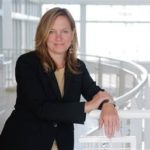 Ingrid Gorman, Author, The Tapestry of Black Business Ownership in America: Untapped Opportunities
Ingrid Gorman, Author, The Tapestry of Black Business Ownership in America: Untapped Opportunities
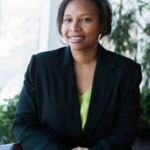 Jaime Love, Program Officer, Interact for Health (moderator), PLACES alumni
Jaime Love, Program Officer, Interact for Health (moderator), PLACES alumni
Know Your Network: Q&A with Heinz Endowments' Mac Howison
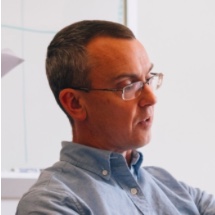 By Martha Cecilia Ovadia, Senior Program Associate for Equity and Communications
By Martha Cecilia Ovadia, Senior Program Associate for Equity and Communications
Who are the funders that make up the Funders' Network? Know Your Network is an occasional Q&A series featuring our members. This month, we chat informally with Mac Howison, a PLACES alum and the new Program Officer for Creative Learning at Heinz Endowments. (This originally ran in the May newsletter for TFN's Older Industrial Cities (OIC) working group.)
7 Questions for the Heinz Endowments' Mac Howison
1. We know you are new to Heinz as a program officer for Creative Learning—how has your transition been and what would you describe as your own personal learning style?
My transition has been exciting and challenging! The team of program staff, leadership, admin and finance at Heinz is incredible. They have made me feel so welcome and valued - I have a lot to learn and their wealth of experience has been immeasurable in helping me adjust to life and work inside of a major family Endowment. My personal learning style is hands-on and in-person: I learn best by listening in person, and sharing experiences with colleagues and grantees that build our personal relationships and our relationship to community.
2. We have a challenge for you: Could you describe your work at Heinz in haiku form?
The
Heinz Endowments
what
is creative learning
I
may someday learn
3. As a PLACES alum—what was your favorite memory as a fellow?
My favorite memories are too numerous to pick just one, but I loved the Clarendon Hotel we stayed in on our site visit to Phoenix, the exploration of civil rights histories in Jackson, Mississippi, and raucous late evening word games in Hartford with other fellows.
4. As a local—what is your favorite lunch spot in Pittsburgh? Oh, and is it really a thing to put fries on hotdogs and sandwiches in Pittsburgh?
My favorite lunch is People’s Indian Buffet in the Garfield neighborhood. And yes, we put fries on almost everything -sandwiches, salads, hot dogs, and more.
 5. With films like "Black Panther" and "Wonder Woman" having such a huge year—what superhero do you identify with the most and why? Bonus question—capes or no capes?
5. With films like "Black Panther" and "Wonder Woman" having such a huge year—what superhero do you identify with the most and why? Bonus question—capes or no capes?
I never gravitated towards superheroes, but I did love the comic book misadventures of Sergio Aragones’ “Groo the Wanderer”. I’m nothing like that Groo guy, in real life, though. Oh, and definitely no cape.
6. What is something you think would surprise people about Pittsburgh?
Despite the extreme topography, Pittsburghers love to ride bicycles!
7. Tell me about your own hometown—is there a special business or shop you would say is a “can’t miss”? What makes it special?
Jerry’s Records in Squirrel Hill is a unique, vinyl-only record store that has the best prices and biggest, most eclectic selection of music anywhere. It’s almost as much a cultural museum as it is a record store. Definitely worth a few hours and a few (cash only) dollars if you’re in Pittsburgh.
About the Author
Martha Cecilia Ovadia is TFN's senior program associate for equity and communications. Contact her at marci@www.fundersnetwork.org.
Remembering Hank Dittmar, a Leading Urban Strategist on Both Sides of the Atlantic
 By Hooper Brooks, Program Coordinator for Northeast Funders Network
By Hooper Brooks, Program Coordinator for Northeast Funders Network
Henry (Hank) Eric Dittmar, passed away Tuesday, April 3, 2018, at the age of 62. Hank was well known to many of TFN’s early funders for his leadership in transportation reform and transit oriented development and was involved and helpful to TFN in its early days, especially at the time of the 2005 Annual Conference held in Albuquerque, New Mexico where Hank lived.
In recent years Hank had served as the Chief Executive of The Prince's Foundation for Building Community (from 2005 to 2013) and had been living in London since 2005. He led an international consulting practice, Hank Dittmar Associates, for the past five years, as well as serving as an advisor to the Foundation.
In the early days of his career he was a regional planner, an airport director, and an outreach worker with street gangs in Chicago's inner city. His role as Director of Legislation and Finance at the Metropolitan Transportation Commission for the San Francisco Bay area laid the groundwork for helping US government officials to see the possibilities of transit and its role in building community - something already practiced in Europe. In 1993 he switched coasts to become Executive Director of the Surface Transportation Policy Project (STPP) in Washington DC, a national collaborative working to use smarter transportation choices as building blocks for better and safer communities.
From 2000 to 2005, Dittmar was the founding president and CEO of Reconnecting America, a not-for-profit organization that integrates transportation and community development, advising community leaders on how to overcome development challenges and create better and more affordable communities. Reconnecting America grew out of another not-for-profit that Dittmar directed: The Great American Station Foundation. Its goal was to renovate old train stations in the hopes of stimulating rail and public transit and transit-oriented development. Hank served as co-founder of the Center for Transit Oriented Development (CTOD), 2003-2015, whose mission was to make “TOD” a preferred development form in US cities, something that succeeded. From 2003 to 2008, Dittmar also served as the Chairman of the Congress for the New Urbanism, a leading organization promoting walk-able, mixed-use neighborhood development, sustainable communities, and healthier living conditions.
I first met Hank as he became Executive Director of STPP, when I was Program Director at the Surdna Foundation. Surdna, as a founding and long term funder of STPP, came to know Hank as a highly effective advocate for transportation reform and stayed with him as he transitioned into the Great American Station Foundation, Reconnecting America and the Center for Transit Oriented Development. In roughly the same time period Surdna broadened its focus from transportation reform to address the complexities of Smart Growth. Hank was smart, creative and knew how to get things done. It was a pleasure for the Foundation to support his work.
As we met to review grant progress, on site visits and at conferences, Hank and I became friends. About a year after he had moved to London to be Executive Director of the Prince’s Foundation, he reached out to me to consider applying for the newly created position at PFBC of International Programme Director. I applied and soon was hired. In June of 2007, I moved to London to begin a new chapter and a deep dive into the field of sustainable urbanism and global diversity.
Dittmar is the author of the 2008 book Transport and Neighbourhoods, co-author and editor of New Transit Town (Island Press, 2004) and a coauthor of Sustainable Planet (Beacon Press, 2000) and Green Living (Compendium, 2009). He wrote a regular column for Building Design magazine and has published articles in the London Evening Standard, the Guardian, the New York Times, the Washington Post, and the Los Angeles Times, among others. Dittmar was finalizing DIY City – Making Small Possible Again, at the time of his death. This latest book takes a hard look at how massive redevelopment projects have affected cities and describes the many benefits of more organic growth of cities, including the advantages for affordable housing. Another book ready for production is a photography book: Out the Hotel Window. A collection of speeches and columns from 2011 to 2018 titled Ancient Lights was also made ready for distribution.
He was active in diverse professional and civic organizations in the UK. He was visiting fellow at Kellogg’s College, Oxford University, had served as an advisor to then-London Mayor Boris Johnson and on the advisory panel for Terry Farrell’s review of architecture and the built environment in 2013. He was also an honorary fellow of the Islington Play Association helping to retro-fit earlier Adventure Playgrounds to serve children of today’s central London neighborhoods.
Hank’s long-held tenets in urban design are neatly summed up in this quote:
"If we surrender our towns, countryside, and cities to the car, we will also be surrendering many other values that we hold dear: neighborhood life, a sense of history and place, a feeling of belonging somewhere.”
He is survived by his wife of 25 years, Kelle Dittmar (nee Jackson), and their twin children, Clara and Cole, who are at University in Wimbledon and Brighton UK, respectively Dittmar was born in Oklahoma, and found himself in such disparate places growing up as Spain, France, California, Oklahoma and Texas, as the son of a Lt. Colonel in the U.S. Air Force. He is also survived by his sister, Susan Dittmar Lough, three nieces and two grand nephews, all residing in Oklahoma.
Recent tributes can be found here, here, and here.

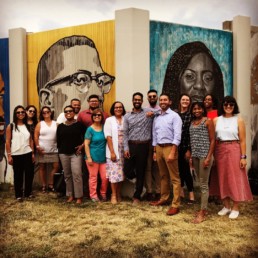
 Confronting these difficult truths is at the heart of TFN's PLACES Fellowship, a year-long learning experience for leaders in philanthropy that gives them the tools they need to embed an equity lens in their work. Today we open up
Confronting these difficult truths is at the heart of TFN's PLACES Fellowship, a year-long learning experience for leaders in philanthropy that gives them the tools they need to embed an equity lens in their work. Today we open up 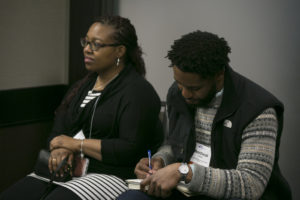 I’m proud to say that our
I’m proud to say that our 
